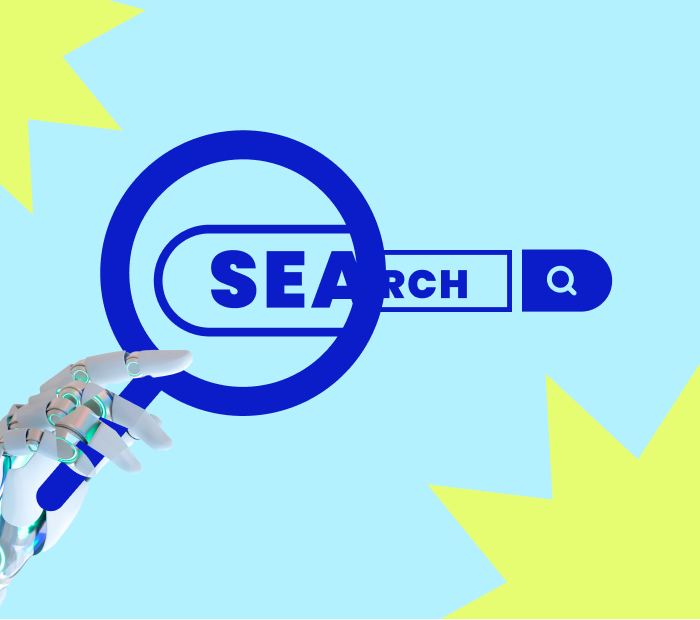
What is Digital Roadmapping?
Imagine a map that shows you the way to your ultimate destination. That’s what a roadmap is for a product or project. It offers you a bird’s eye view of the vision and direction over time. Think of it as a blueprint, showing the overall strategy and the work needed to get there. It’s like having a guide to help you navigate your journey.
Digital road mapping is a process that involves laying out an organisation’s digital landscape, using the latest technology to establish its digital goals, and developing a plan to attain them. The purpose of road mapping is to bring together expertise from different areas of the organisation to look at the future of the website. Participants work together to build a visual map towards their desired future, and digital transformation strategies are made through a highly collaborative process, encouraging commitment from all participants.
Necessity of Digital Roadmaps for Organisations
Minor Website Updates
Digital roadmapping is a collective process that combines efforts from the marketing, business, product or digital experts team to achieve a common goal. This digital design helps an organisation plan and execute its strategy in a way that ensures it will deliver the best results for its customers. For a roadmap to be effective, it must have certain traits that can eliminate possible problems and risks.
Organisations can use digital roadmaps to align their digital initiative with their overall company plan. In a business, it’s always a challenge for companies to choose which strategic goals need priority. Digital roadmaps can help identify which of these initiatives can generate business value, ensuring that they are allocating their resources effectively.
By determining the areas that need improvement and developing a strategy to address them, digital roadmaps assist businesses in maximising their digital capabilities. Digital roadmaps help companies stay innovative by staying updated with the newest trends and digital technology. This strategy ensures that companies constantly search for new possibilities and push the limits of what is possible.
Benefits of a Digital Transformation Strategy
Major Website Updates
Shifting from traditional business practices to digital transformation involves the adaptation of new technology solutions and redefining business operations. Here are some benefits of a digital transformation plan and why businesses should consider implementing it.
Improved Business Efficiency
Roadmap for digital transformation enables businesses to facilitate their operations, automate processes, and eliminate redundant tasks. This increases efficiency and productivity, allowing the company to focus on more important tasks by reallocating resources.
Enhanced Customer Experience
With a digital transformation strategy roadmap, businesses can develop consistent consumer experiences across numerous platforms, such as mobile applications, social media, and websites. This enables customers to effortlessly connect with businesses at their convenience, making their experience more satisfying and personalised.
Greater Data Insights
Businesses may now gather enormous amounts of data on their operations, clients, and products to make wise judgements about their operations and marketing plans by using this data to gather insightful knowledge about their customers' preferences, actions, and patterns.
Competitive Advantage
Companies can gain an advantage over competitors through digital transformation. They can stay current and improve by adopting new technologies and defining their processes. This results in better offerings, customer services, and experiences that lead to customer loyalty and market expansion.
Increased Revenue
Using a strategic roadmap for digital transformation helps businesses find new customers and expand reach through online channels. This allows companies to create new services or products, leading to more opportunities for revenue growth.
How to Create a Successful Digital Roadmap
Define Goals & Objectives
Before implementing a digital strategy, it's important to identify what business goals you want to achieve and what benchmarks you will use to measure its effectiveness. This may involve boosting website traffic, generating leads, or enhancing customer interaction. Having clear goals allows you to create a roadmap with the necessary steps to achieve them.
Assess Digital Landscape
Assess your current digital landscape before creating a roadmap. Check your website, social media, and other digital channels to see what's working and what's not. Identify technology gaps or weaknesses and use this information to develop your strategy.
Develop Digital Roadmap
Once you clearly understand your objectives and the digital landscape, it's time to develop your strategy. Your strategy should involve a clear plan for how you will use digital tools to achieve your goals, including which channels you will use. This is also the time to assess your hosting and support options, such as choosing a reliable web hosting provider and securing ongoing technical support.
Implement & Monitor Roadmap
Now that you have your roadmap and strategy, it is time to implement your plan. This may involve developing a new website or updating your existing one, creating social media accounts and developing a content strategy, and launching online advertising campaigns. Remember to have a step-by-step approach and track your progress. Also, make sure to follow your budget plan for your advertisements.
Adapt Digital Roadmap
Don't just place your digital roadmap and forget about it. Continuously evaluate and improve it to achieve your goals. Regularly check performance reviews, website analytics, and customer feedback to ensure it is being adapted. Have active hosting and support to keep your website and digital channels up-to-date and functional.
Lorem Ipsum is simply dummy text of the printing and typesetting industry. Lorem Ipsum has been the industry’s standard dummy text ever since the 1500s, when an unknown printer took a galley of type and scrambled it to make a type specimen book. It has survived not only five centuries, but also the leap into electronic typesetting, remaining essentially unchanged. It was popularised in the 1960s with the release of Letraset sheets containing Lorem Ipsum passages, and more recently with desktop publishing software like Aldus PageMaker including versions of Lorem Ipsum.
Digital Roadmapping: Best Practices
Test Updates in a Staging Environment
Digital roadmapping is a plan for achieving digital goals. It involves setting goals, identifying resources, and prioritising initiatives to meet business objectives. To create a successful digital roadmap, keep these tips in mind.
Align with Business Goals
Align your digital roadmap with your company's goals and objectives. Prioritise digital initiatives that will bring the most value to your organisation.
Involve Stakeholders
Get representatives from the IT, advertising, product, and finance departments and others involved. This makes it easier for everyone to work towards a shared goal and ensures that the roadmap reflects the requirements and organisational goals.
Be Agile
Adapt your digital roadmap as market conditions and technology trends change. This will keep you ahead and ensure your investments align with your goals.
Prioritise Initiatives
To allocate resources effectively, prioritise digital initiatives based on their impact on business objectives and required resources. Focusing on goals with high value will ensure maximum impact.
Set Realistic Timelines
Set realistic timelines for each milestone based on resources and budget to avoid over-commitment. Make sure that your goals are achievable.
Measure Results
To improve your digital roadmap, track progress over time. It'll help you identify areas for improvement and refine your initiatives.
Plan for Hosting and Support
Figuring out what hosting and support infrastructure is necessary for your digital assets to function without issues.
Create a Clear Path to Success with Digital Roadmapping from Butterfly
As a leading and trusted web development agency in Melbourne, Butterfly can help you create a strategic plan that can increase engagement, drive traffic and boost conversions. We have the expertise and experience to guide you in creating your digital roadmap. This roadmap outlines the steps you need to take to achieve your goals. It will include actionable and measurable steps, so you can track your improvement and make adjustments as needed.
Don’t leave your organisation’s future to chance. Let Butterfly’s digital roadmapping services help you create a clear path to success. Contact Butterfly today to learn more about navigating the complexities of the digital landscape and achieving your goals.
Digital Roadmapping FAQs
What is the main purpose of a roadmap?
What are the basics of a roadmap?
What makes a good roadmap?
What should be included in a digital roadmap?
- Business objectives and how digital can support them
- Realistic timelines for each digital initiative
- Resource requirements for each initiative
- Assessment of current digital capabilities
- Metrics for tracking progress and measuring success
- Identification of gaps and prioritisation of areas for improvement
- Prioritisation of digital initiatives based on potential impact and resources required
- Hosting and support requirements for digital assets




